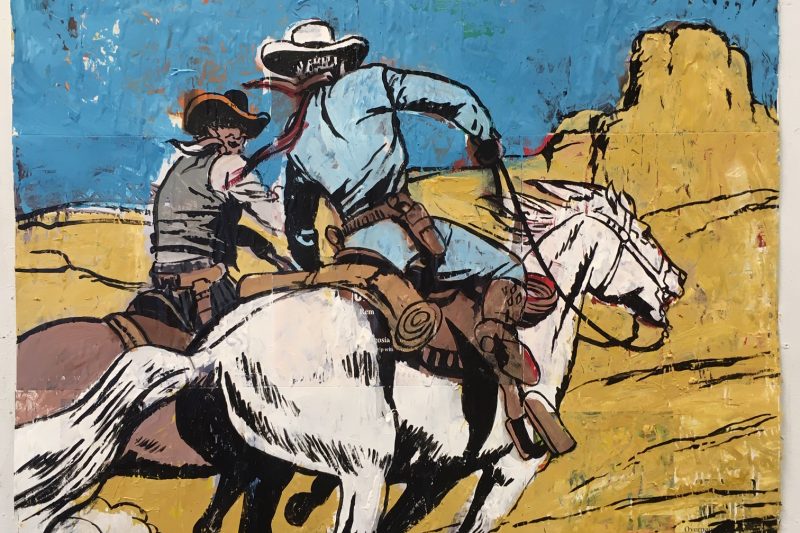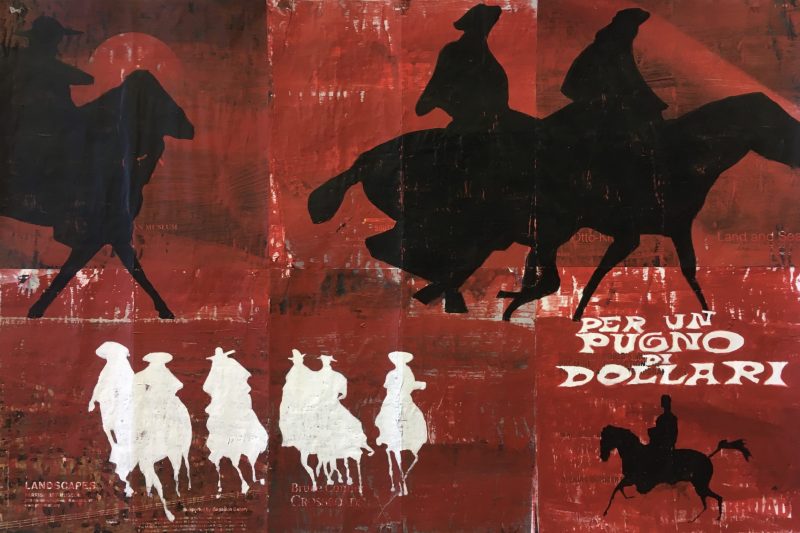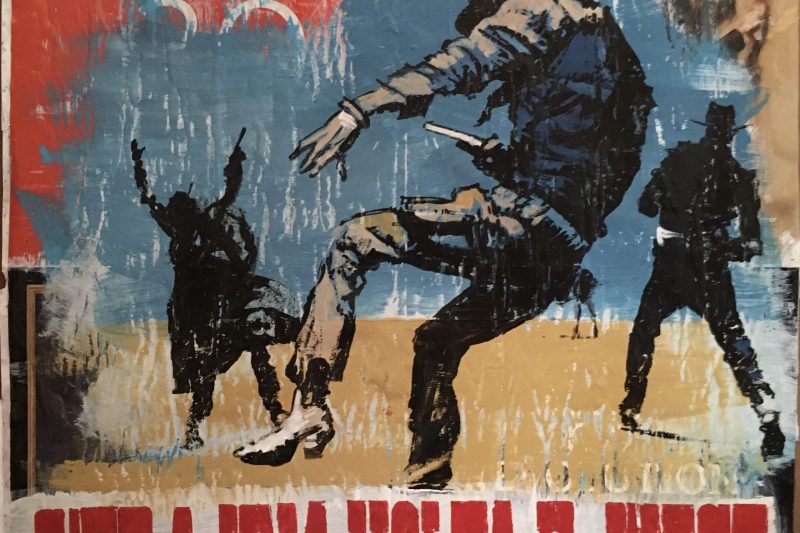Governor’s Arts Awards were given to four Montanans and Blackfoot Pathways: Sculpture in the Wild by Gov. Steve Bullock toward the end of his tenure. Lively Times continues to profile the five recipients with Billings artist and curator Gordon McConnell.

“No one has done more for art in Montana – as an artist, curator, and all-around spark plug – than Gordon McConnell,” writes Mark Stevens, who nominated the artist, writer and curator for the Governor’s Arts Award.
His co-nominator, Dr. Leanne Gilbertson, director of Northcutt Steele Gallery at Montana State University Billings, describes him as “an active participant in the cultural fabric of Montana and the American West, fostering and promoting contemporary arts while maintaining his own significant, evolving studio practice for over 30 years.”
McConnell earned his undergraduate degree in studio art from Baylor University in Texas and a master’s in art history from the University of Colorado in Boulder. He arrived in Billings in 1982 as assistant director at the Yellowstone Art Center (now Museum). “It was a distant West for an art-obsessed kid from Colorado, far over the horizon into a terrain of the imagination,” he writes of his introduction to Montana.
He was introduced to a vibrant regional art scene and discovered a sense of connection and community reflected in the institutions and organizations that helped foster and support contemporary art and artists in Montana.
McConnell became part of that community, curating visionary shows and helping the art center, housed in the former county jail, evolve into a major cultural institution. His curatorial accomplishments are substantial, and include more than 60 exhibits for the Yellowstone Art Museum (YAM), plus myriad exhibits at a range of art institutions in Montana and Wyoming.
Along the way, “McConnell’s work has paved lasting paths through which subsequent and innumerable creators, critics, curators, and arts professionals have passed,” writes Gilbertson.
For Donna Forbes, YAM’s director for two decades, “He was the ideal colleague, a passionate student of 20th century American art who had the gift of clearly explaining the depths of his passion for art.” She also appreciates his “rich sense of humor (which) embellishes and enlivens his written and spoken contributions.”
McConnell is lauded as a writer and critic for his honesty, clarity and an aptitude for articulating challenging ideas. “He is also possessed of an eloquence that imparts dignity to any artist whose work he discusses,” writes sculptor Patrick Zentz.
As a curator, “His vision is unique and is recognized all over the country,” writes artist Theodore Waddell.
McConnell has shown his own work across Montana, and beyond with exhibits at the Eteljorg Museum of American Indians and Western Art in Indianapolis, IN; Mountain Trails Gallery, Jackson, WY; The Arts Center, St. Petersburg, FL; and the Meridian International Center, Washington, D.C., in an exhibition that traveled to the National Art Gallery, Beijing, and other museums in China.
“When the West Was Won” is currently on display at MonDak Heritage Center in Sidney through Jan. 1, after touring museums large and small across Montana since last fall.
McConnell often conjures images fueled by western myth and romance, inspired by his own lifelong fascination with western movies, but with an edgy, contemporary feel informed by his own extensive knowledge of cinematic and art history. Stevens calls him a “courageous artist,” whose paintings “depict the dream of the West in contemporary terms, appreciatively but without nostalgia. In his art, Gordon creates a kind of subtle scrim through which we see the past and know the present.”
And beyond these three elegantly executed and often entwined pursuits of curator/writer/artist, McConnell is also known for his kindness and generosity, for connecting and inspiring other artists, and for continuing that legacy of community that he discovered almost 40 years ago in his adopted state.
For all of these contributions, Zentz aptly calls him “a humane, brilliant and watchful cultural treasure of Montana.”
The MAGDA-sponsored traveling exhibition, “Gordon McConnell: When the West Was Won,” will show at Paris Gibson Square Museum of Art in Great Falls, March 1-May 1 as the final stop of a seven-venue tour. His work is also scheduled for a one-man show at Kirks’ Grocery in Billings during June 2021.
Q&A with the artist
LT: How have Montana and its people shaped your life’s work?
Gordon McConnell: When I came north from Texas in 1982, Montana was for me a distant, imaginary place. l have grown and thrived in this epic land now for nearly four decades. It is truly my home, a state rich in art and artists and friends everywhere.
At the Yellowstone Art Center where I came to work, Donna Forbes, Chris Warner and Patrick Zentz introduced me to a thriving scene of grassroots modernists and a “Rural Avant-garde.” During the next 16 years, a local and statewide community, hundreds of individuals, helped us build the Art Center into a legacy institution, The Yellowstone Art Museum. An especially notable aspect of this progress was the Montana Collection, composed primarily of purchases from the state’s living artists. Miriam Sample and the Montana Cultural Trust made this possible, their support allowing me to serve at my highest capacity as a curator and writer. I documented and contextualized this important art, writing a first draft of history.
I left the museum at the end of 1998 and through the grace of a network of friends and colleagues, found places to exhibit my paintings and work as a freelance curator and writer. I have spent much of my working life alone at a keyboard or easel, but everything I have done has been motivated and inspired in some measure by the people I know, especially my friends in Montana.
LT: It’s been a rough year for Montana artists and the venues and organizations that support their work. Do you have any words of wisdom or encouragement to share?
McConnell: We are living in a historically challenging time, but it is also one of the best times there has ever been for artists to do their work. Part of that, for established artists in particular, is to mentor younger artists, to buy their art and contribute to museums and galleries and other arts organizations. We must continue to build the good and preserve what we have.


